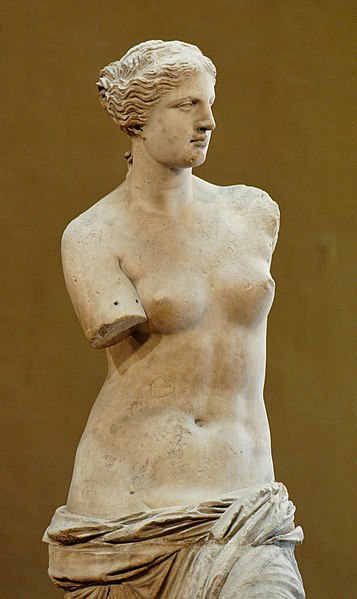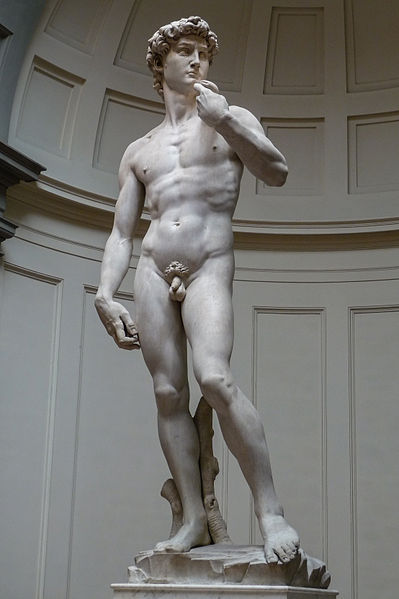Physical attractiveness is the degree to which a person's physical features are considered aesthetically pleasing or beautiful. The term often implies sexual attractiveness or desirability, but can also be distinct from either. There are many factors which influence one person's attraction to another, with physical aspects being one of them. Physical attraction itself includes universal perceptions common to all human cultures such as facial symmetry, sociocultural dependent attributes, and personal preferences unique to a particular individual.
Venus de Milo at the Louvre has been described as a "classical vision of beauty".
Michelangelo's David is considered a symbol of young male beauty and strength.
Ishtar, Mesopotamian goddess of sexual love and war. The goddess has been associated with sexuality, love, and fertility.
Xi Shi (西施), born 506 BC, was one of the Four Great Beauties of ancient China.
Aesthetics is the branch of philosophy concerned with the nature of beauty and the nature of taste; and functions as the philosophy of art. Aesthetics examines the philosophy of aesthetic value, which is determined by critical judgements of artistic taste; thus, the function of aesthetics is the "critical reflection on art, culture and nature".
A man enjoying a painting of a landscape. The nature of such experience is studied by aesthetics.
Rainbows often have aesthetic appeal.
The Mandelbrot set with continuously colored environment







